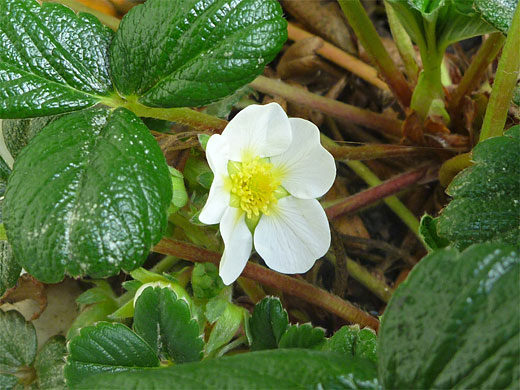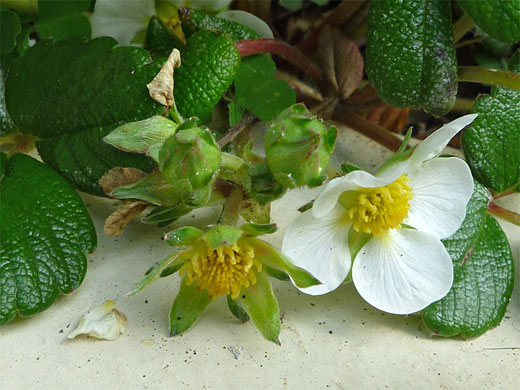Common names:
Beach strawberry, coastal strawberry, Chilean strawberry, sand strawberry
Family:
Scientific name:
Fragaria chiloensis
Main flower color:
Range:
Coastal areas of California, Oregon and Washington
Height:
Up to 12 inches
Habitat:
Beaches, sand dunes, coastal bluffs and grassland
Leaves:
Evergreen, glossy, divided into 3 obovate leaflets (trifoliate), each 2 inches in length. Hairy underneath, smooth on top
Season:
March to June
Fragaria chiloensis has shiny, evergreen leaves with slightly lobed edges, and tiny teeth at the tip of each lobe. Flowers (up to 1.5 inches in diameter) are formed of five rounded white petals, which have faint lengthwise veins, and five shorter, pointed green sepals. At the center are short, thick yellow stamens, numbering 20 to 35. Flowers are followed, in mid to late summer, by small, edible red fruits; along with fragaria virginiana, this species was hybridized to create the familiar, widely-sold garden strawberry. Plants produce a dense leaf cover and spread by runners, which readily take root, and help to stabilize sand dunes.
All Contents © Copyright The American Southwest | Comments and Questions | Contribute | Site Map




